Looking for fun and educational gifts for your children? Here are some games that can light up your child’s executive functioning, language, and logic skills.
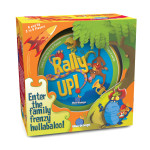
Rally Up
(ages 6 and up)
Executive and cognitive functioning skills built: Focus and attention, visual perception, and processing speed.
This game consists of 110 exotically illustrated cards which are shuffled, distributed, and then rhythmically turned face-up on the table. Players will race to “rally up” two or more images belonging to the same family or category. Children must visually scan swiftly through the craziness of this fast paced game in order to get the pictures back to where they belong! I was first introduced to this game when a mini-version of it came in my son’s Chick-Fil-A meal.
This can be a great game for language development for students who may struggle in this area. Before playing the game, I had my son verbally “label” the objects on the cards, talk about what he saw, and tell me which things he thought went together and why. I also had him describe the pictures.

AnimaLogic
(ages 5 and up)
Executive functioning skills built: Planning and prioritizing, organization, and flexible thinking.
In this animal-themed game, hippos, giraffes, lions, and camels need to cross the bridge over the river. The trick is, they can only go in a certain order. Players have to solve the pattern puzzle in order to help the animals get to the other side. There are five levels of difficulty in this sequencing challenge. This activity will grow with grade-school students as they get older and their executive functioning skills improve.
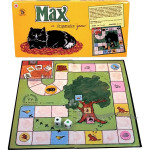
Max: A Cooperative Game
(ages 4–7)
Executive functioning skills built: Prioritizing and planning, flexible thinking, and emotional control.
This game requires cooperation, communication, and planning. The players must work together to safely get a bird, chipmunk, and a mouse back home before the hungry cat, Max, pounces on them. Kids roll the dice in order to determine how the animals move on the board, and this calls for them to adjust to the unexpected. But as a team, the players can divide the number of moves among the different creatures. So the next time your child gets upset over a change in the schedule or plans, try reminding him of how flexible he is when he plays Max—and how that flexibility can pay off.
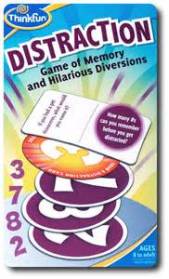
Distraction
(ages 8 and up)
Executive functioning skills built: Working memory, flexible thinking.
In this tricky and fun game, the players go around one at a time, taking cards from a pile. The cards all have numbers on them. Each time a player draws a new card, he has to recite all the previous numbers, plus his new one. If the player draws a Distraction Card, he has to answer a question (“Would you rather kiss a jellyfish or step on a crab?”) before he repeats the number sequence. Kids won’t even realize they’re working on their recall skills; they will just think they are having fun! However, you should see gains in your child’s ability to recall facts/information, hold information (retention), and sequential memory.
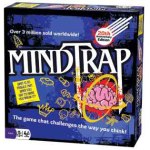
Mind Trap
(ages 12 and up)
Executive functioning skills built: Flexible thinking.
If your tween or teenager likes word problems or riddles, then Mind Trap may be a great Christmas find for her! This game can be played individually or in teams, making this a great addition for family game night or homeschool co-op. There are no trivia questions involved in this game, but it does have tricky riddles for kids to solve. Each card encourages players to think critically about a puzzling question. For instance: “Bob went for a walk without bringing his raincoat or hat or umbrella. How did his hair not get wet?” The answer? “It wasn’t raining.”
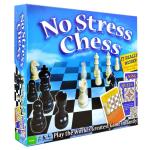
No Stress Chess
(ages 7 and up)
Executive functioning skills built: Planning and prioritizing, task initiation, organization, impulse control, flexible thinking.
Classic chess is probably the best-known strategy game. However, it can be intimidating for children who don’t know how to play. As its name implies, No Stress Chess, offers a low-stakes environment in which children can learn how to play chess. A player draws a card that tells her which piece to move. Then it’s up to her to choose where the piece should go. Over time, kids develop the logic skills and confidence to execute moves without the cards. Instructions are included for three levels of beginner’s play. This game provides great “scaffolding” support to move children into playing real chess. So when kids are ready, they simply flip the board over to play standard chess.
Merry Christmas—and happy gaming!
-Faith
Photo Credit: iStock

